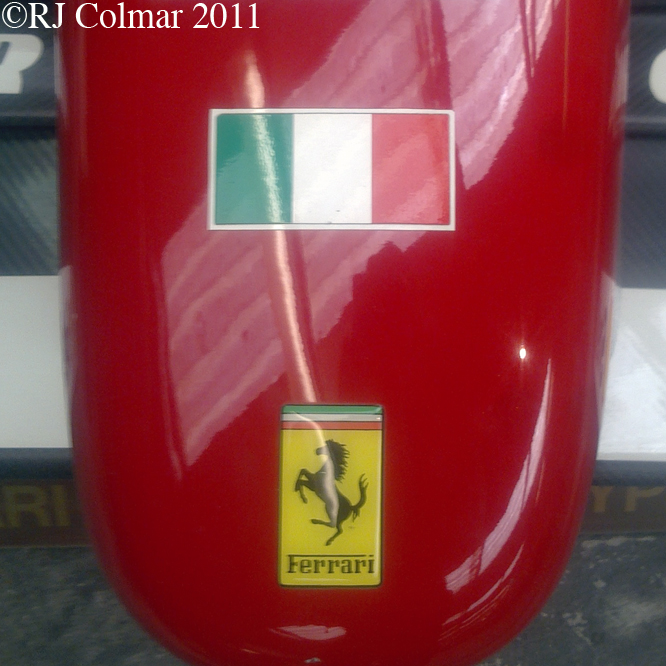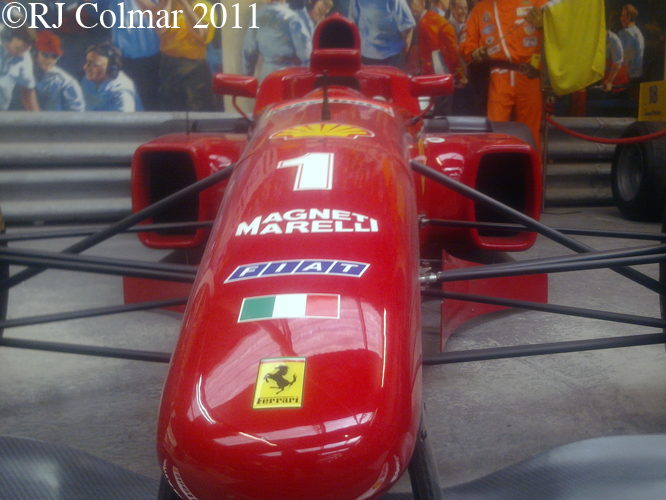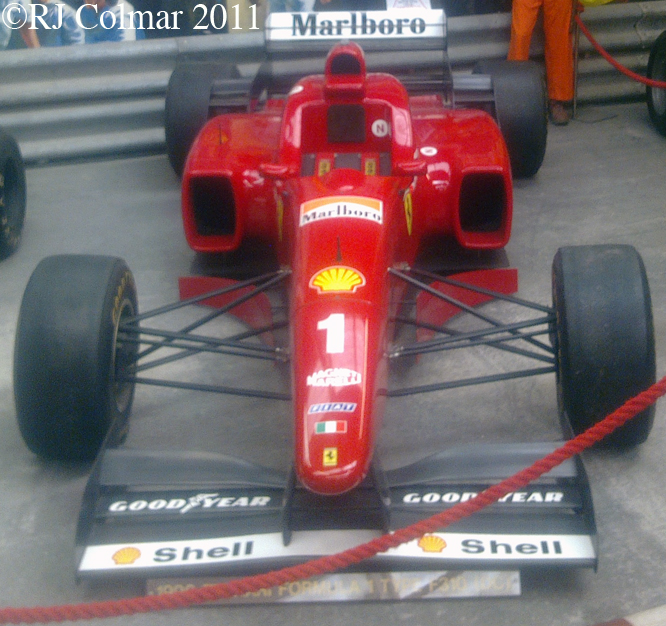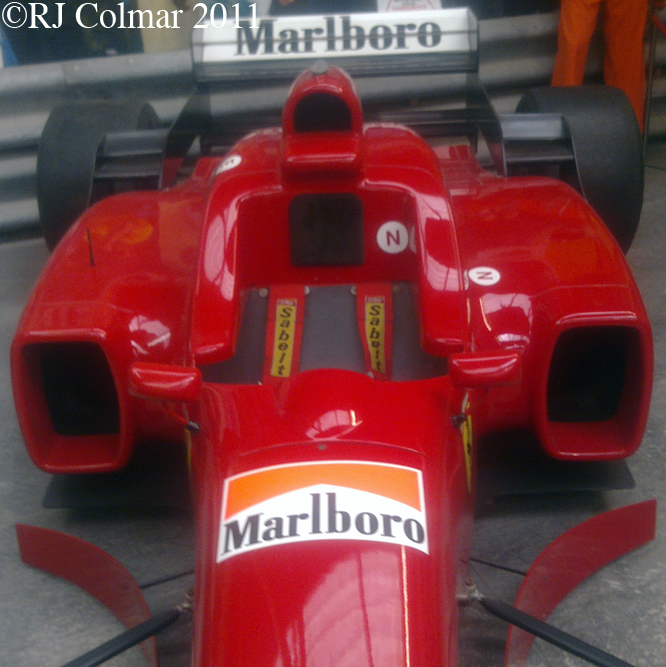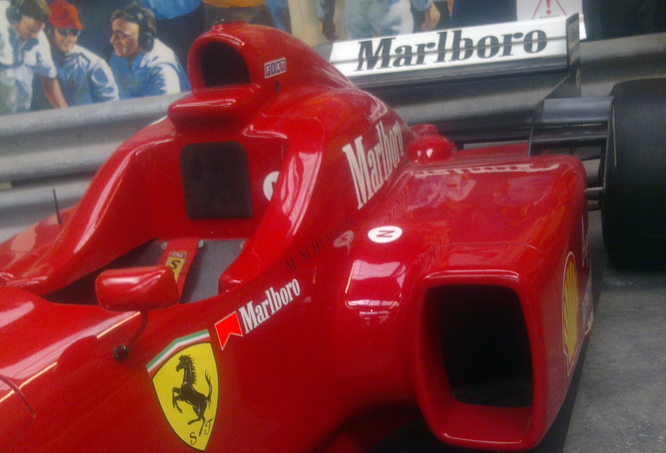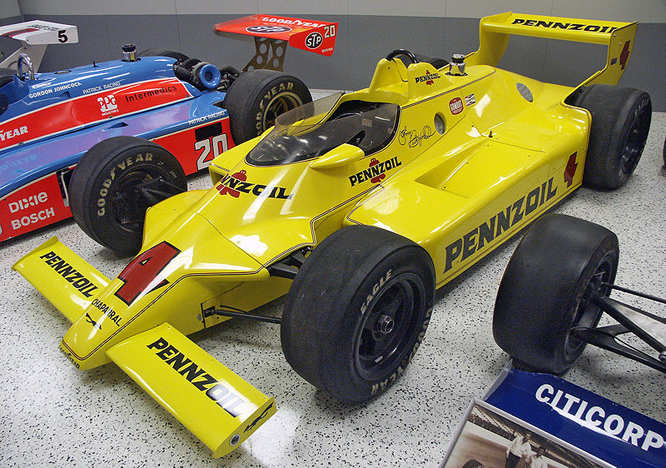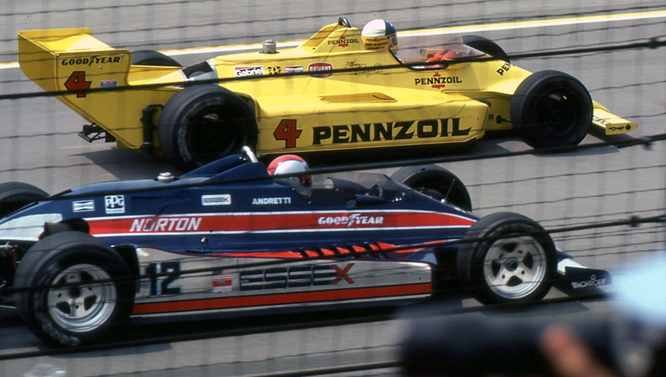Coming off two championship wins with Benetton in 1994 powered by Ford and 1995 powered by Renault Micheal Schumacher named his price, allegedly of the order of $30 million per year, and joined Ferrari in order to take up the challenge of attempting to become the first driver to win the World Drivers Championship in a Ferrari since Jody Scheckter in 1979.
John Barnard who’s designs include the Indy 500 winning Chaparral 2K and Grand Prix Winning McLaren MP4/1 and subsequent championship winning McLarens was responsible of the design of the F310 with which Schumacher was to win races in in 1996 and challenge for the championship in 1997.
The original version of the F310 featured the only low nose in the field …
but by the half way mark a high nose as pioneered by Dr Harvey Postlethwaite and Jean-Claude Migeot at Tyrrell in 1990 was permanently adopted by the Ferrari Team in order to maximize the use of airflow beneath the car to the advantage of the cars handling. It is curious that Jean-Claude Migeot did not introduce the feature during his spell at Ferrari in 1992.
The design if the F310’s side pods with a separate…
‘floor’ beneath harks back to the Ferrari F92A a design that proved so recalcitrant that it led to designers Jean-Claude Migeot and Steve Nichols replacement by John Barnard !
The F310 was the first Ferrari to feature a 3 litre / 183 cui V10 motor, although this static show car seen at the Haynes International Motor Museum probably does not even have a mock engine, again following pioneers Renault and Honda who had opted for this unusual yet successful layout in 1989. Reliability was an issue for these V10 motors though that did not stop Micheal winning 3 races in 1996 and challenging, albeit controversially, for the championship with the F310B in 1997.
Thanks for joining me on this ‘Static Show Car’ edition of ‘Gettin’ a li’l psycho on tyres’ I hope you will join me again tomorrow when I’ll be looking at a Lotus 41. Don’t forget to come back now !

